I regularly hear the question “Couldn’t Canada be considered a Nordic country?”, and it’s not hard to see why; with its vast landscapes around the Arctic Circle, progressive social policies, and love for ice hockey (an NHL team was even named “the Nordiques” for Pete’s sake!) — Canada does sound remarkably similar to the Nordic countries. Still not convinced? There is even an archeological site with an actual Viking settlement in Canada!
Alas, as a North American country, Canada is geographically disqualified from being considered a Nordic country. But despite being separated by the great Atlantic, there is undoubtedly still a connection of sorts between Canada and the Nordics — and even a “Whisky War” between the Nordic country of Denmark and Canada — so I think it’s well worth exploring the connection, history, and similarities between Canada and the Nordics.
I’ve forged multiple close friendships with Canadians I’ve met on my travels over the years (hi Kyle & Karl 👋), and I’ve been fortunate enough to spend some time in their beautiful homeland, primarily in Alberta and B.C. So, while I do refer to reputable external sources throughout this article, I am also speaking as a Nordic person with plenty of firsthand experiences with Canada and Canadians.
- How Canada and the Nordics are Similar and Connected
- Canadian and Nordic Diplomatic Relations
- Canadian and Nordic Economic and Trade Connections
- Canadian and Nordic Environmental Cooperation
- Canadian and Nordic Cultural and Academic Exchanges
- Canadian and Nordic Shared Values and Social Policies
- Overlaps of the Canadian and Nordic Climates & Animals
- Similarities Between Canadian and Nordic Political and Economic Systems
- Canadian and Nordic Quality of Life Seems Very Similar
- A Growing Proportion of Canadians Claim Nordic Heritage
- Why Canada is NOT a Nordic Country
- Reason #1: The Nordics is a Geo-Cultural Region Far from Canada
- Reason #2: Geographic Distinctions (& Border Disputes!) Between Canada and the Nordics
- Reason #3: The Geographical Features of Canada & the Nordics Differ Significantly
- Reason #4: Differences Between Canadian and Nordic Political and Economic Systems
- Reason #6: Cultural and Historical Differences Between Canada and the Nordics
- Reason #7: Canadian vs. Nordic Social Welfare
How Canada and the Nordics are Similar and Connected
Even though Canada can never be considered a Nordic country due to its geographic location, the North American nation definitely has some strong similarities to the Nordic region, who also tend to see eye-to-eye with the Canucks on many things in today’s modern world.
With around 3.4% of the Canadian population claiming Nordic heritage and a full-fledged Viking village archeological site, there seems to be plenty of Nordic culture to go around in Canada even to begin with. And although it’s a fairly small part of the population who have any sort of kinship to the Nordics, there are plenty more similarities connecting the two, including similar diplomatic, economic, environmental, and cultural values, as well as a common Western democratic foundation (evident in commitments to human rights, environmental stewardship, and social welfare).
Let’s take a closer look at some of the bonds and connections between Canada and the Nordics:
Canadian and Nordic Diplomatic Relations
Canada maintains strong diplomatic ties with all Nordic countries; manifested through various bilateral agreements and collaborative efforts in international forums such as the United Nations, the Arctic Council, NATO, and the Organisation for Economic Co-operation and Development (OECD).
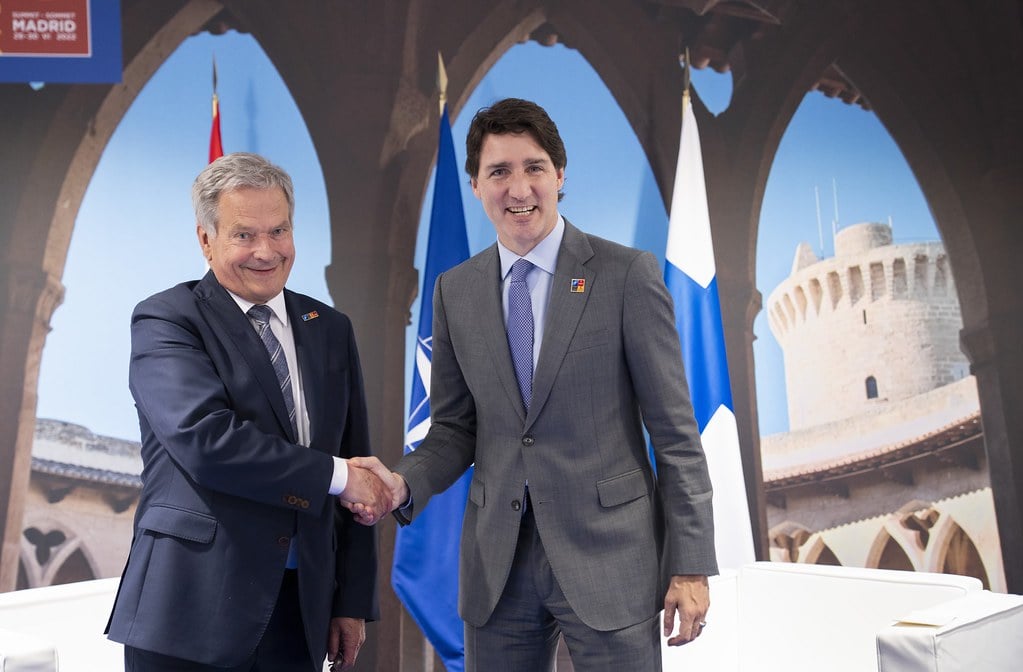
These relationships are rooted in mutual respect and shared interests in promoting peace, security, and sustainable development globally.
Canadian and Nordic Economic and Trade Connections
Economically, Canada and the Nordic countries are important trade partners. They engage in significant bilateral trade, with goods and services flowing both ways, including natural resources, technology, and pharmaceuticals.
To illustrate just how much trade flows between the two countries, Canada is Sweden’s 24th biggest export partner with a total of $1.46 billion USD exported from Sweden to Canada in 2021, and Swedish Statistics estimates that 58% of all engineering products exported from Sweden in 2019 was sold to Canada.
🇸🇪➡🇨🇦
2021
Exports
$1.46B
RaNK: 24 / 219 Countries
🇨🇦➡🇸🇪
2021
Exports
$408M
RaNK: 46 / 219 Countries
The Comprehensive Economic and Trade Agreement (CETA) between Canada and the European Union, which includes Denmark, Sweden, and Finland, has further strengthened these economic ties by reducing tariffs and facilitating access to markets.
Canadian and Nordic Environmental Cooperation
Given their shared interests in the Arctic and concerns about climate change, Canada and the Nordic countries collaborate closely on environmental issues. This includes joint research initiatives, sharing best practices for sustainable development, and working together in international climate negotiations.
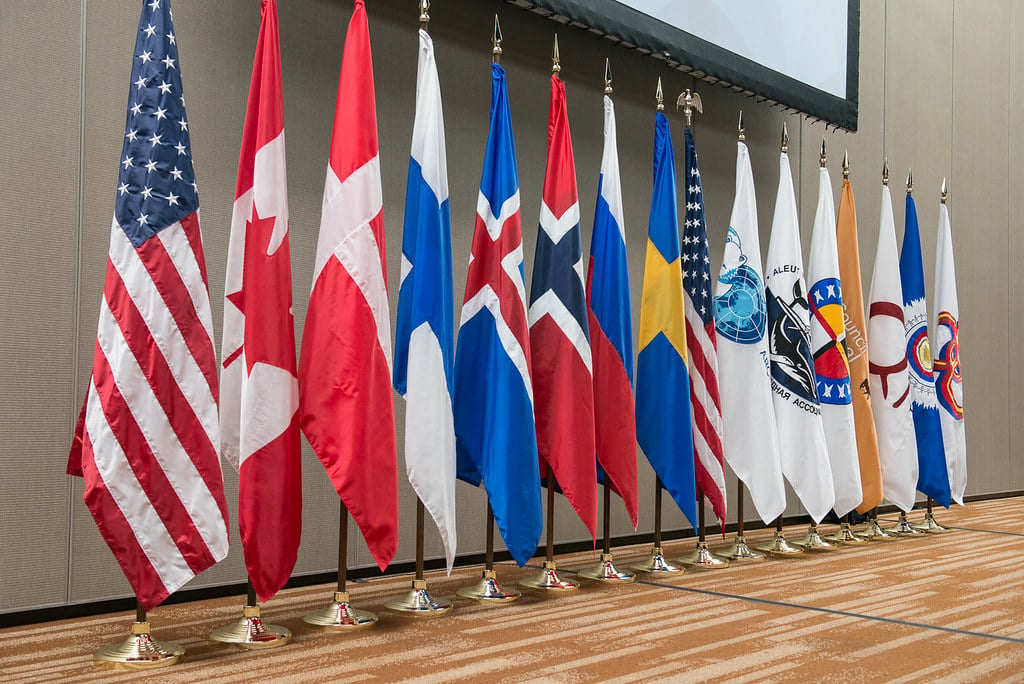
The Arctic Council, where both Canada and Nordic countries are members, serves as a crucial platform for cooperation on Arctic issues, including environmental protection and sustainable development.
Furthermore, in 2019 the UArctic Network (University of the Arctic) reported that more Canadian and Nordic research teams are collaborating, specifically focusing on the Arctic region’s environmental sustainability. Canadian researchers often partner with Norwegian institutions to study permafrost and the environmental impact of human activity in the Arctic.
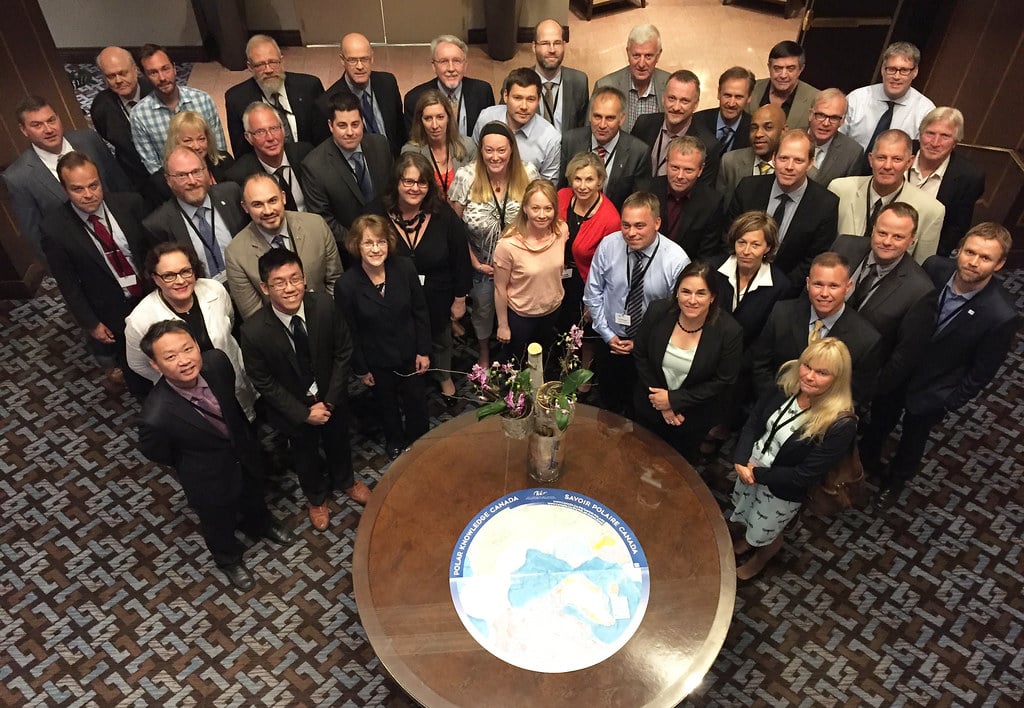
Canadian and Nordic Cultural and Academic Exchanges
Culturally and academically, there are numerous exchanges between Canada and the Nordic countries, including educational partnerships, cultural programs, and academic collaborations.
Canadian and Nordic universities often participate in exchange programs, allowing students and researchers to study and work in each other’s countries.
For instance, universities like University of British Columbia (UBC) and University of Toronto collaborate with institutions like Stockholm University and University of Oslo on global issues such as environmental studies and public health. These collaborations include joint research projects, symposiums, and student exchange programs.
Furthermore, exchange programs through initiatives such as ERASMUS+ and NORDPLUS encourage Canadian students to study in Nordic countries and vice versa.
Although programs like these have resulted in a slight growth in Canadian students in the Nordics, the amount is far from large. For example, Swedish universities reported a total of 140 Canadian students according to official statistics published by SCB in May 2024, compared to 123 in 2015.
For those who appreciate Nordic culture and heritage in Canada, there are festivals and events showcasing Nordic arts, music, and literature held annually, including those arranged by the Canadian Nordic Society (such as Midsummer and Christmas celebrations).
Canadian and Nordic Shared Values and Social Policies
Perhaps the most profound connection between Canada and the Nordic countries lies in their shared values regarding social policies.


Both regions prioritize social welfare, healthcare, education, and gender equality — aiming to ensure high living standards for their citizens.
Canada’s healthcare system, social safety nets, and policies on gender equality and inclusiveness reflect principles similar to those found in the Nordic model of social democracy.
Both Canada and Nordic countries are global leaders in promoting gender equality. In the Nordic region, countries like Sweden and Norway consistently rank among the highest in gender equality metrics. For instance, Sweden has made substantial strides in equal pay and parental leave, offering up to 480 days of shared parental leave per child, which can be used by either parent.
Similarly, Canada has implemented progressive parental leave policies, offering up to 18 months of leave for parents through the Employment Insurance (EI) Parental Benefits program. Both regions view gender equality as fundamental to their societal frameworks.
Free education is a hallmark of the Nordics and Canada, with both globally recognized for its equitable and high-quality education system. All Nordic countries and Canada offer free public education up to secondary school and, although Canada doesn’t offer free university studies, they have relatively affordable higher education compared to for example the United States.
Both regions emphasize equal access to education as a way to reduce inequality and promote social mobility.
Overlaps of the Canadian and Nordic Climates & Animals
Canada and the Nordic countries, despite their geographical separation, share several climatic similarities and host some overlapping animal species, primarily due to their northern latitudes and similar biomes (i.e. plants and animals).
Both regions experience long, cold winters and relatively short and mild summers with extremely long days, particularly in their northern parts. This similarity in climate supports a range of similar wildlife, specifically adapted to these extreme conditions.
Climatic Overlaps
The northern parts of Canada and the Nordic countries, especially Norway, Sweden, and Finland, lie within the boreal forest belt, also known as the taiga. This biome is characterized by its cold, dry winters and short, warm summers.
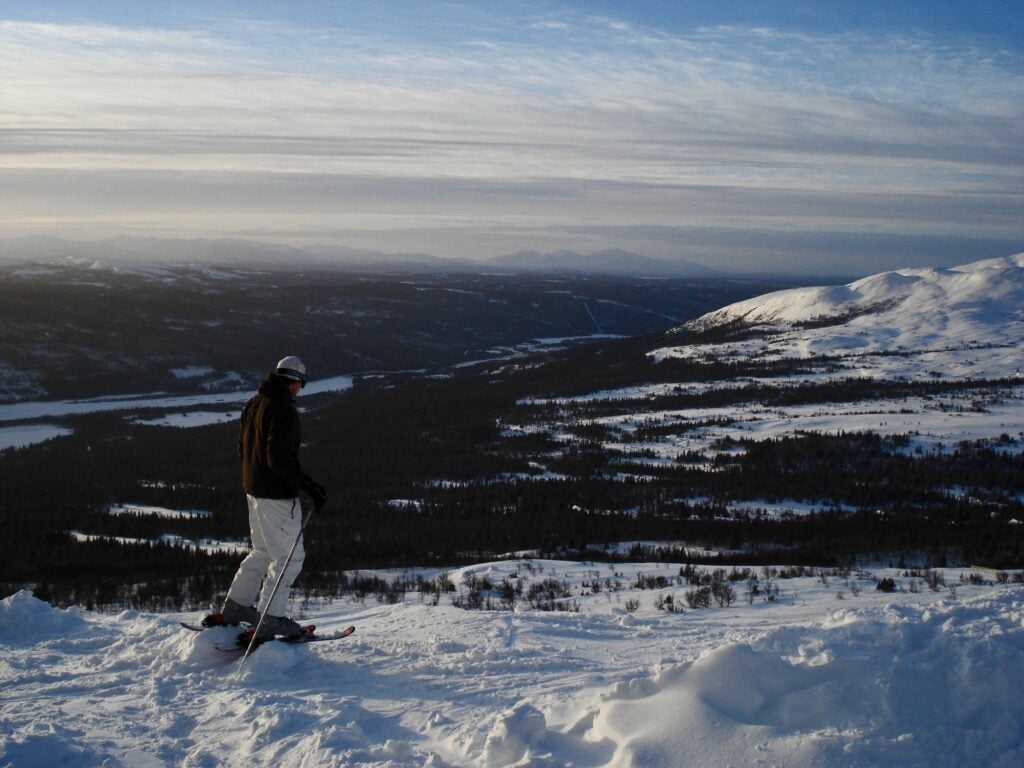
Both regions also have areas within the Arctic Circle, experiencing polar day and night phenomena. Greenland (an autonomous territory within the Kingdom of Denmark) and Canada’s northern territories share tundra and ice cap climates, where temperatures can plummet far below freezing, and the landscape is predominantly ice, snow, and rock.
Animal Species
The similarities in climate and ecosystems between Canada and the Nordic countries allow for some overlap in native animal species, particularly those adapted to cold environments.
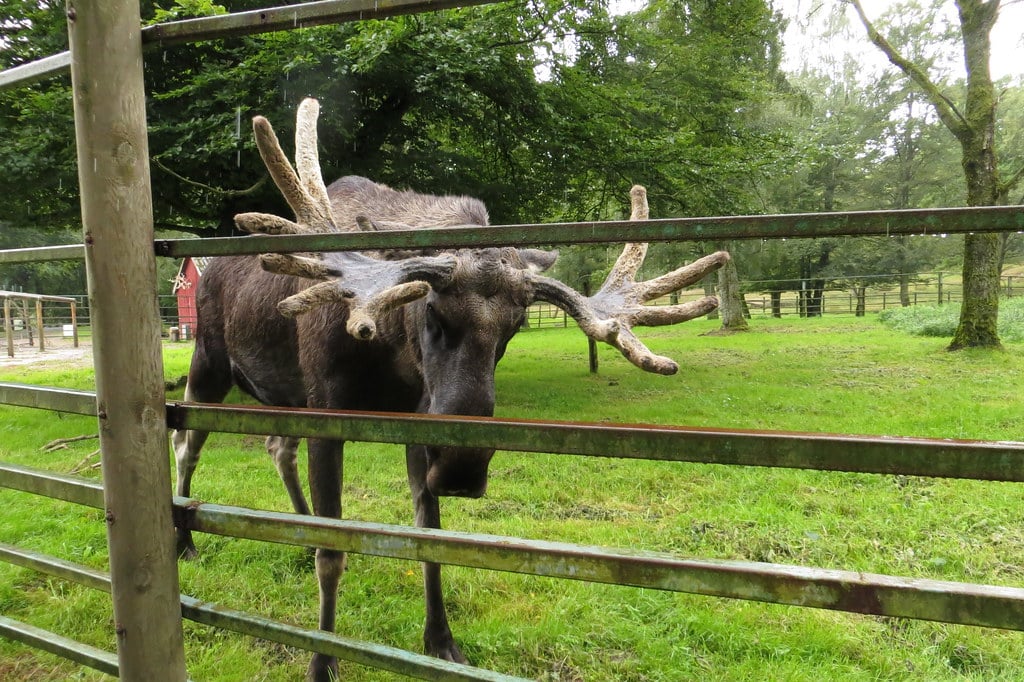
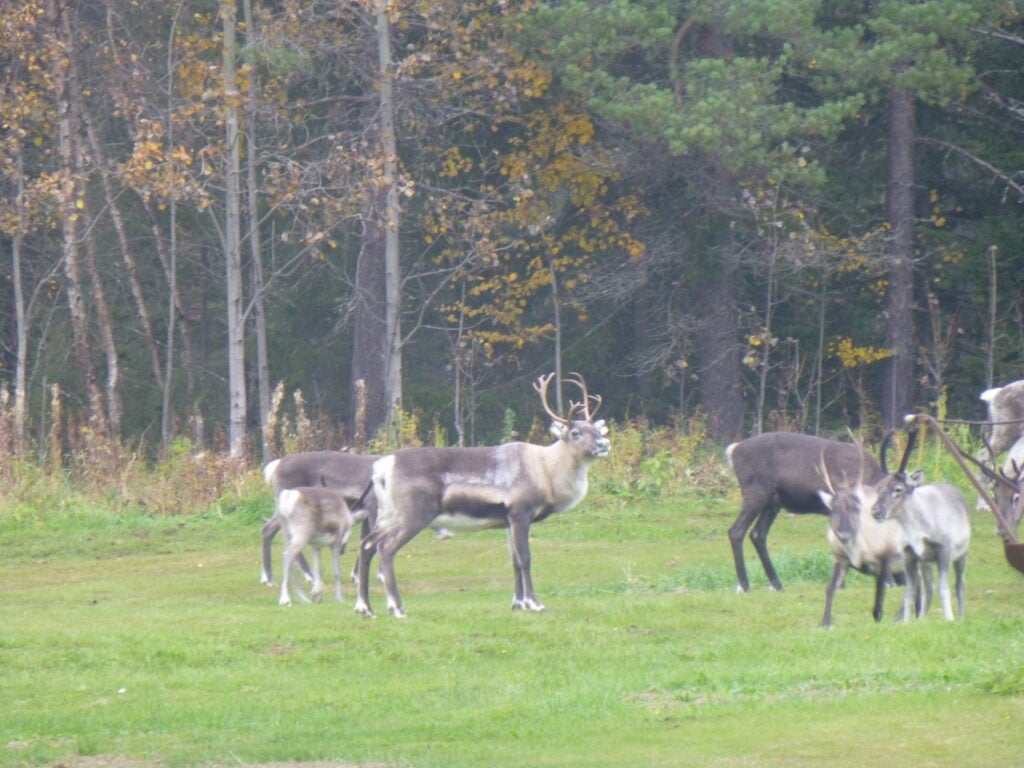
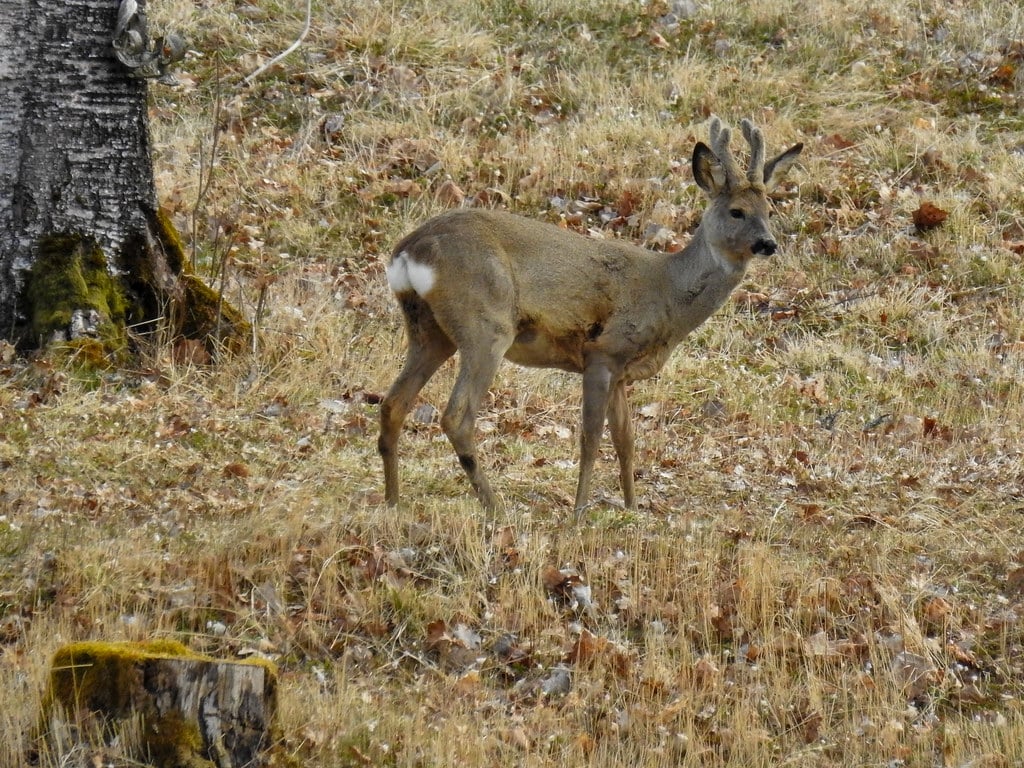
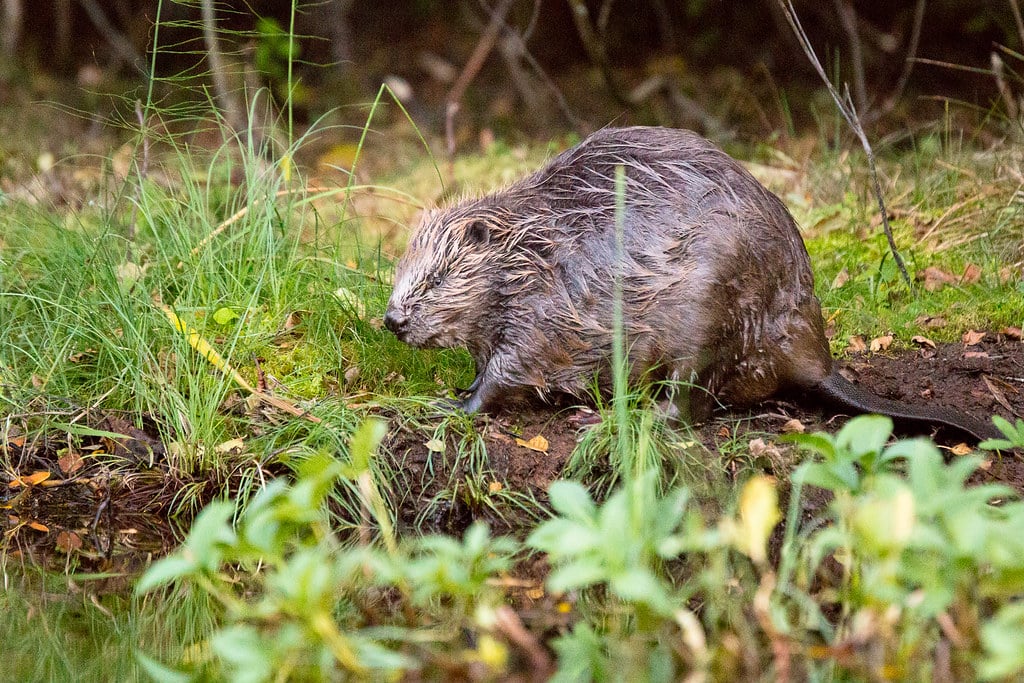
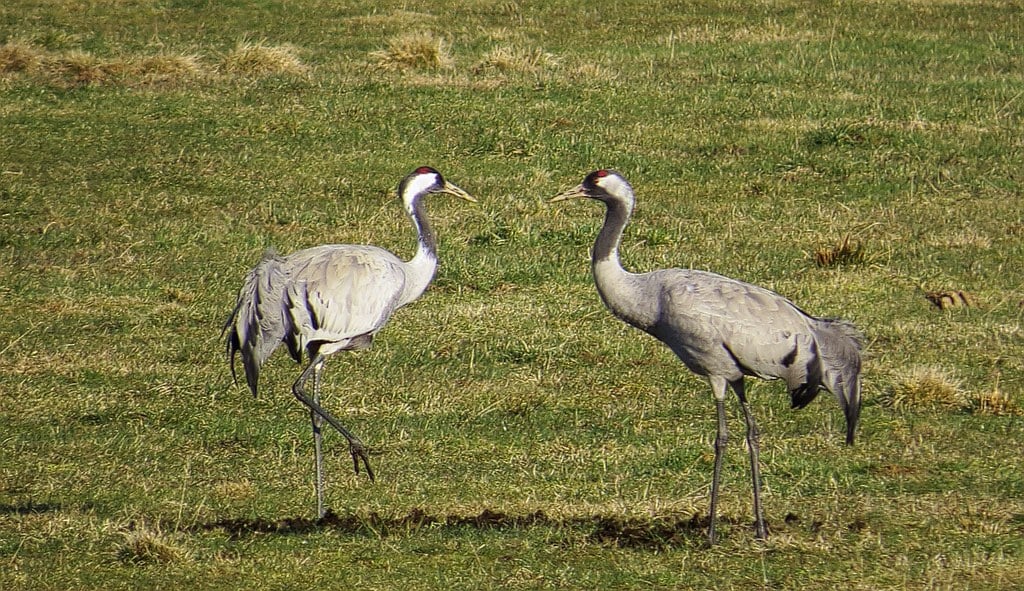
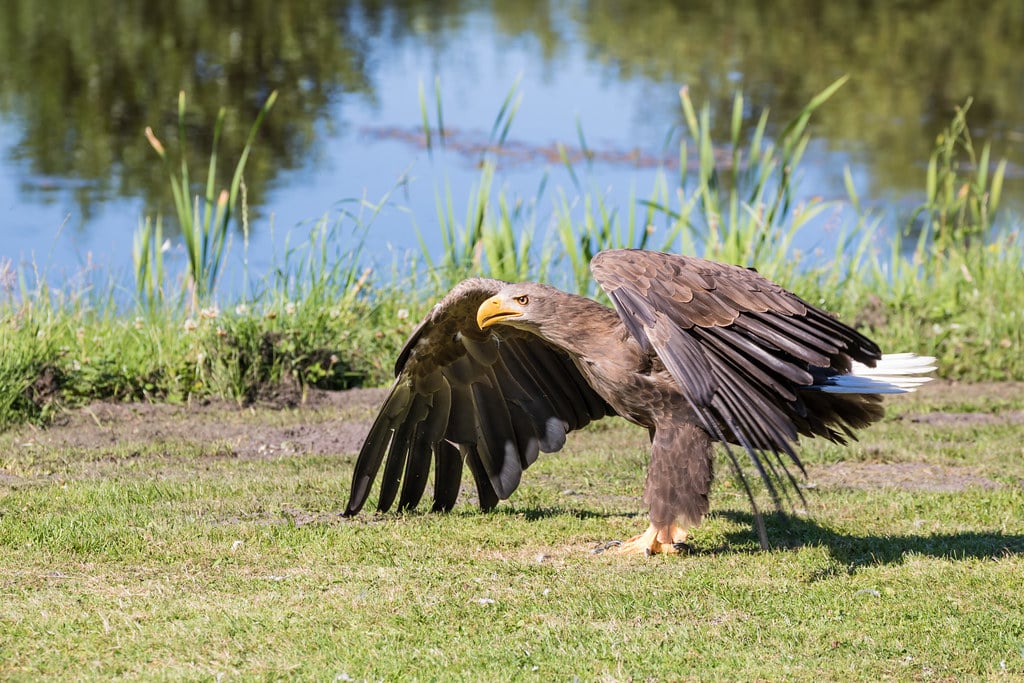
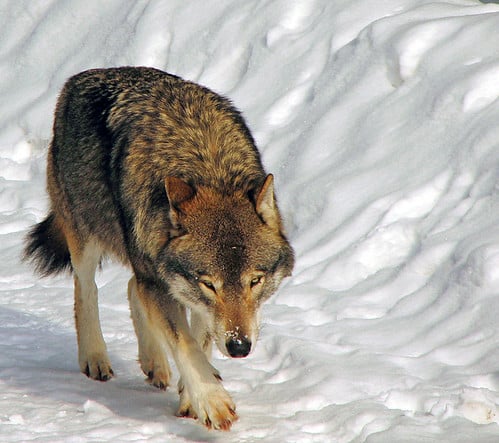
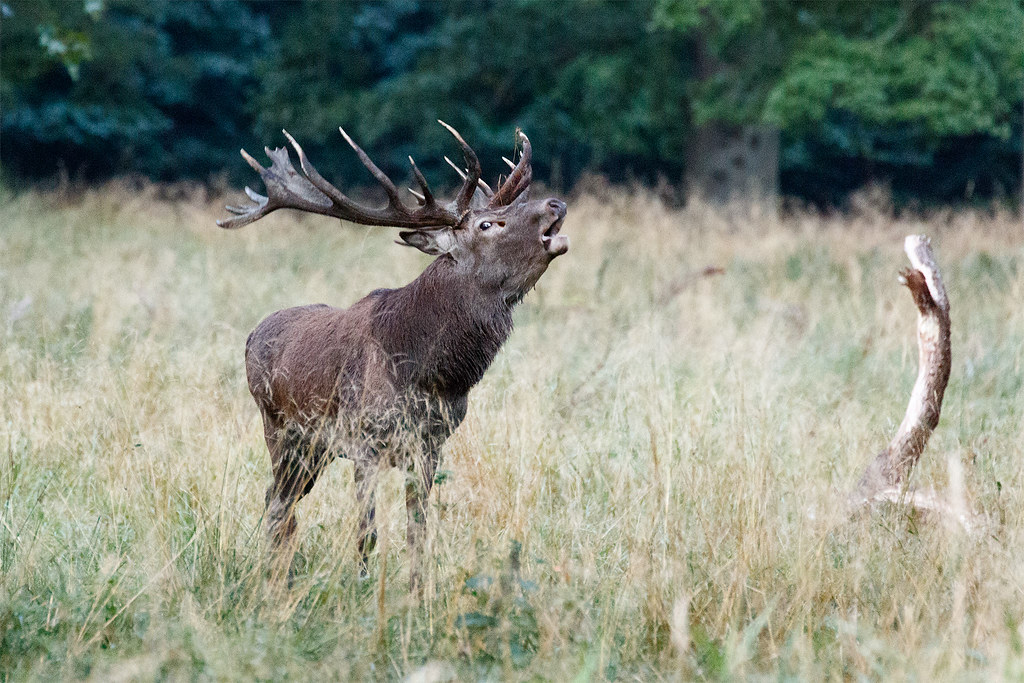
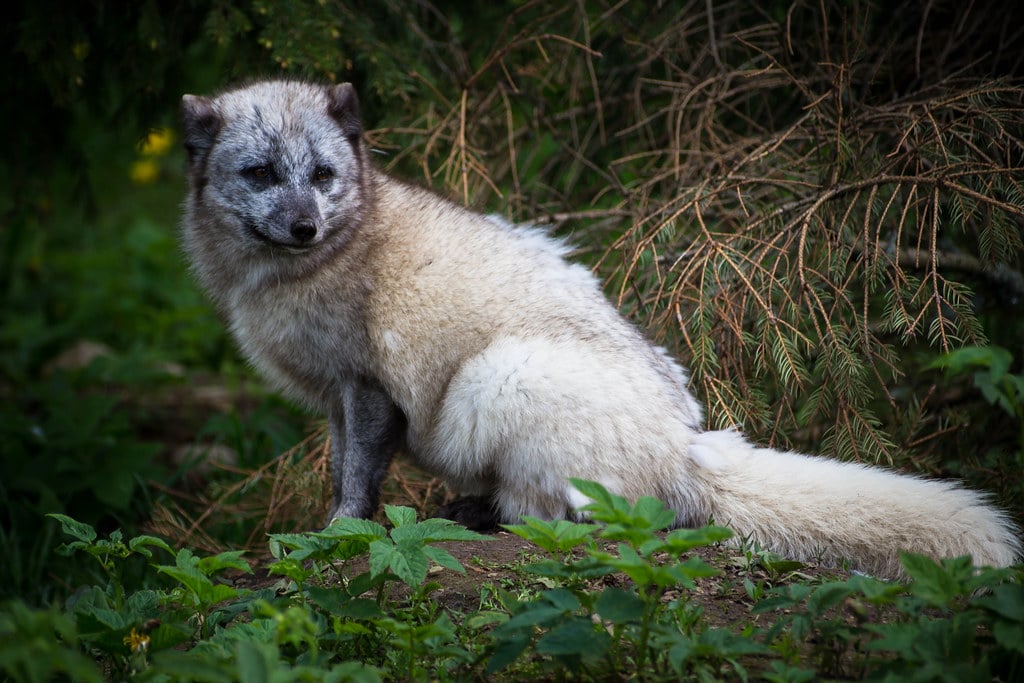
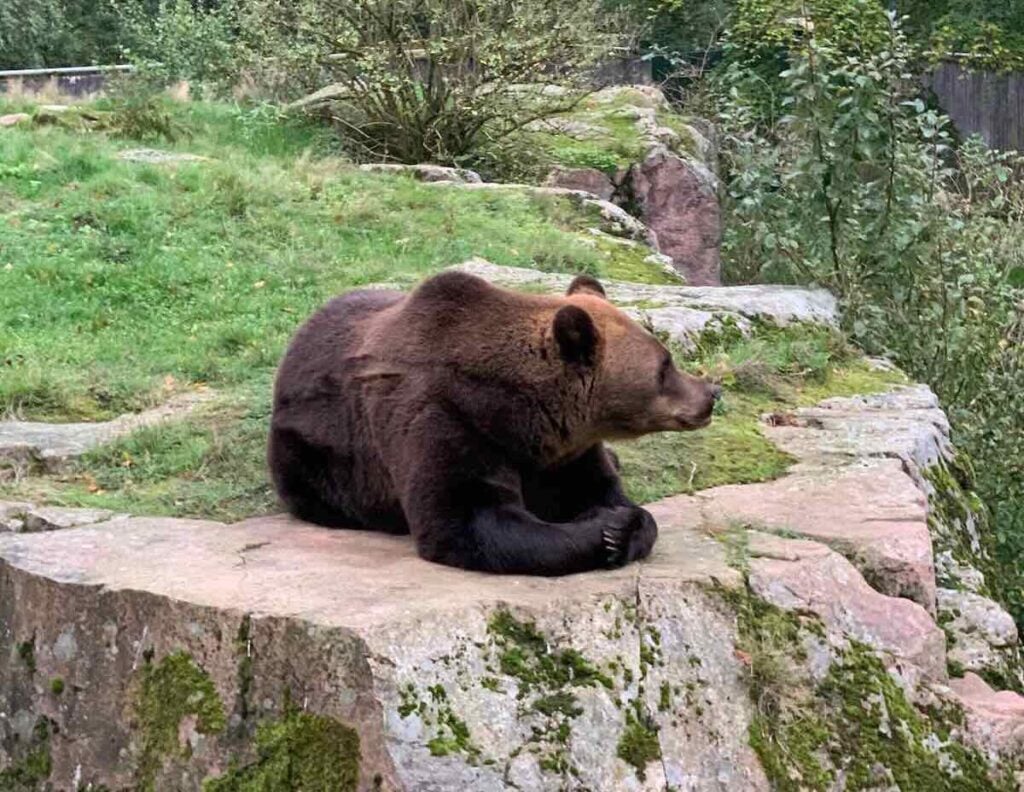
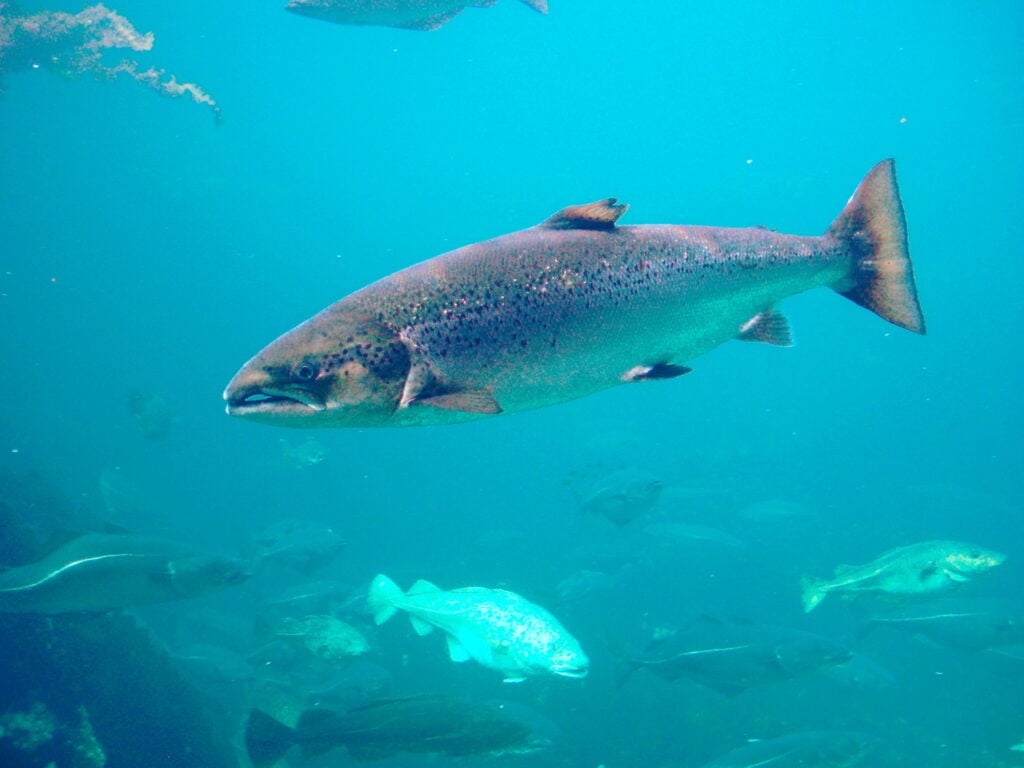
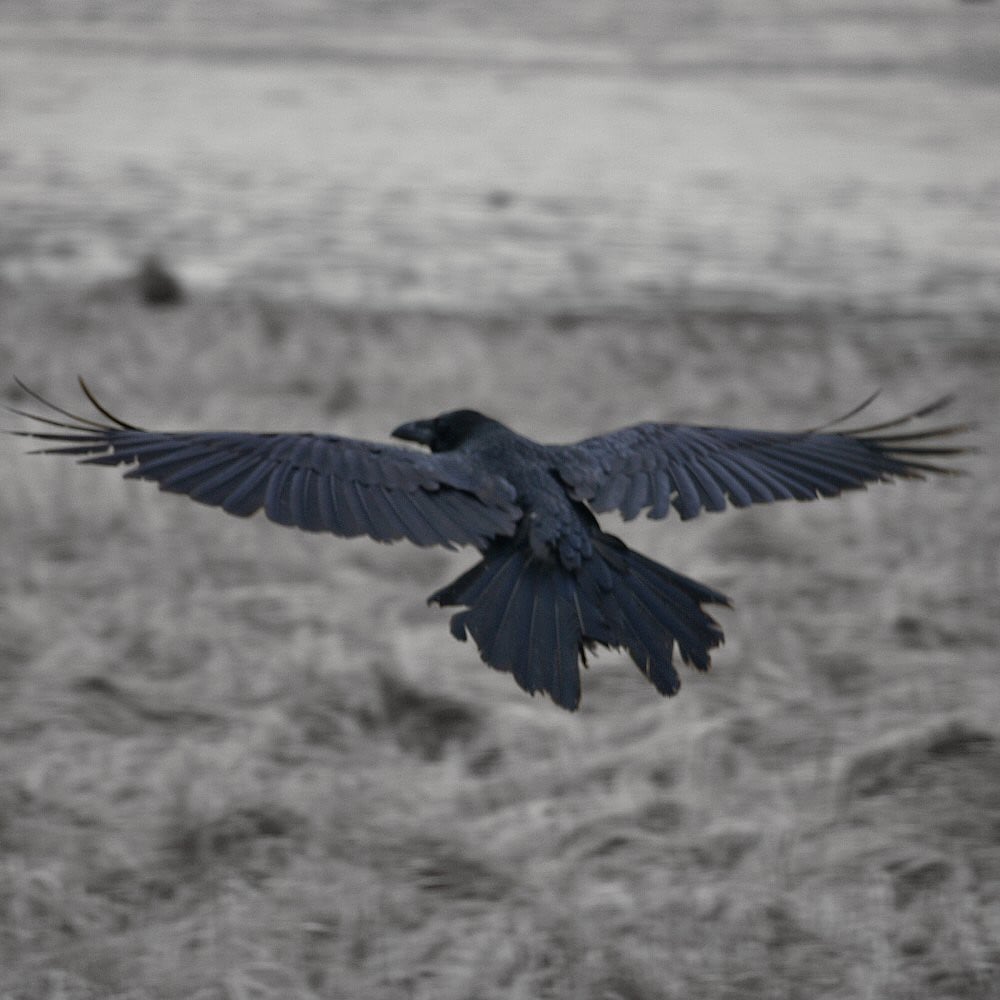
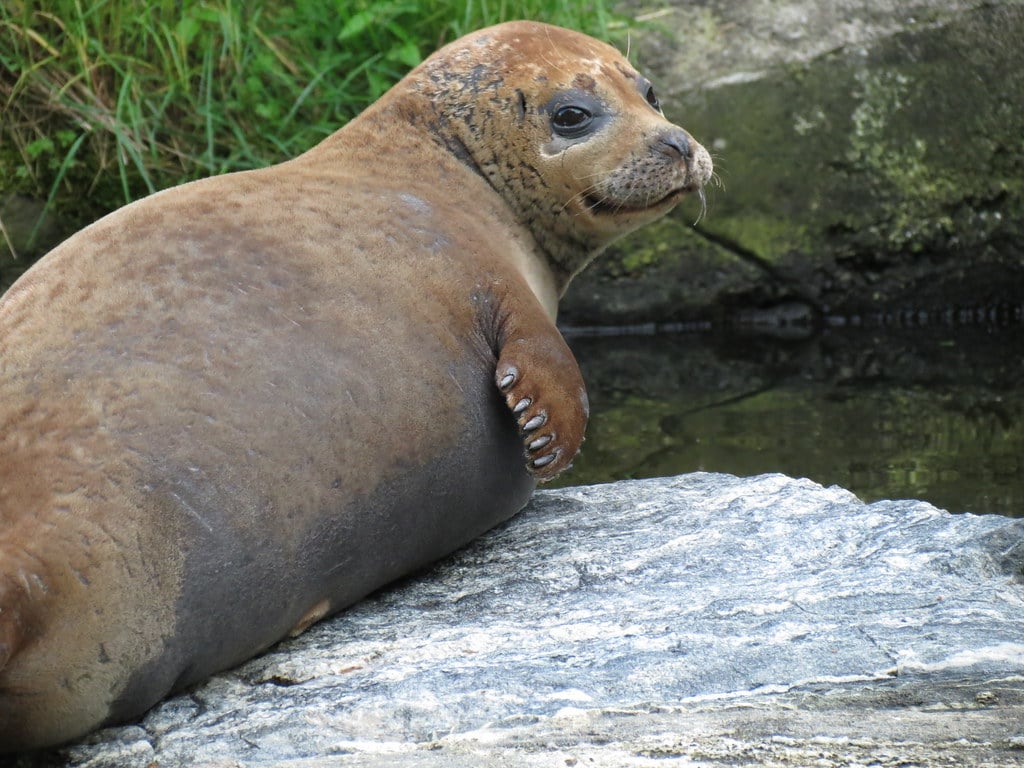
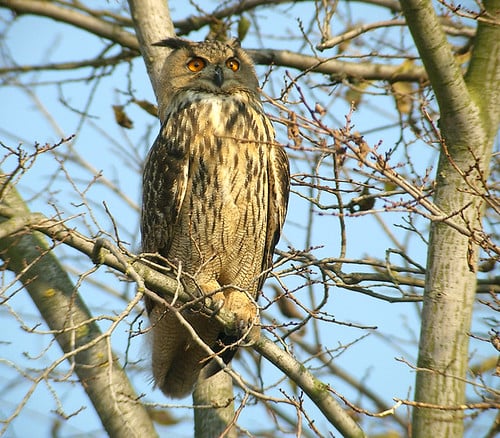
- Both regions are home to the polar bear, the largest land carnivore, which is primarily found in the Arctic Circle.
- Caribou in Canada and reindeer in the Nordic countries (specifically in Norway, Sweden, and Finland) represent another species with similar lifestyles and habitats; although they are considered the same species, they are known by different names in North America and Eurasia, respectively.
- Other common species include the Arctic fox, various species of seals, and numerous bird species such as the Raven and Eagle-owl, which thrive across these northern landscapes.
Similarities Between Canadian and Nordic Political and Economic Systems
As we’ve already touched upon in the section describing shared cultural and social norms, Canada and the Nordic countries share several fundamental similarities in their political and economic systems, reflective of their commitment to democratic governance and social welfare.
Perhaps the most obvious similarity would be that both regions operate under “western” democratic frameworks that prioritize the rule of law, individual freedoms, and a parliamentary system of governance.
For instance, Canada’s governance is characterized by its federal parliamentary democracy and constitutional monarchy, where the British monarch acts as the ceremonial head of state, a structure shared in some form by Nordic countries like Sweden, Denmark, and Norway, which are also constitutional monarchies. Finland and Iceland, meanwhile, function as republics but maintain parliamentary systems.
These democratic systems foster political stability and transparency, encouraging active citizen participation in governance (Democracy Index, 2020).
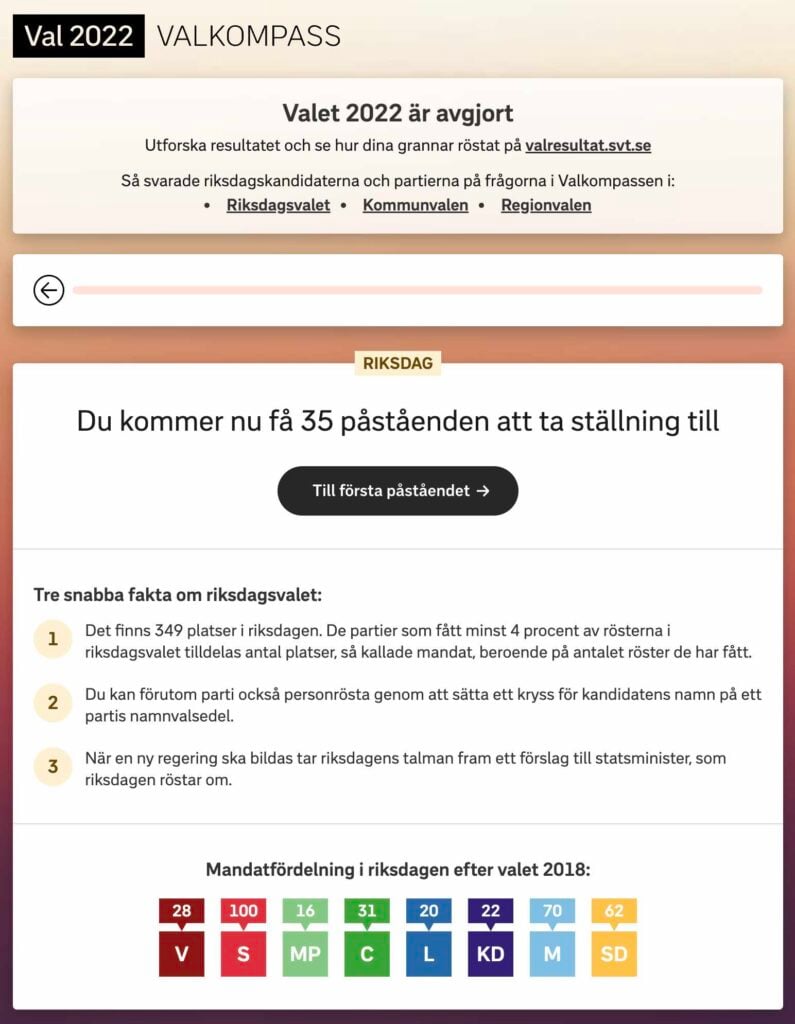
Economically, both Canada and the Nordic countries benefit from mixed economies that skillfully blend market capitalism with extensive social safety nets, aiming to combine economic efficiency with social equity.
The Nordic model is particularly noted for its comprehensive welfare state, supported by high levels of taxation, which funds universal healthcare, education, and social security benefits. Canada, while having a less extensive welfare system compared to the Nordic model, still offers significant social programs, including universal healthcare, through a system of public funding and provision.
Both regions strive to ensure that economic prosperity benefits a broad segment of their populations, actively working towards reducing income inequality and enhancing the quality of life for their citizens (World Happiness Report, 2021).
Canadian and Nordic Quality of Life Seems Very Similar
A big similarity between Canada and the Nordics that I couldn’t help to notice on my own travels, is the perceived quality of life in both regions. Both rank highly in global comparisons, but the Nordic welfare model is still considered distinct in its commitment to minimizing social inequality through government intervention (Andersen, Globalization and the Nordic Welfare States, 2019).

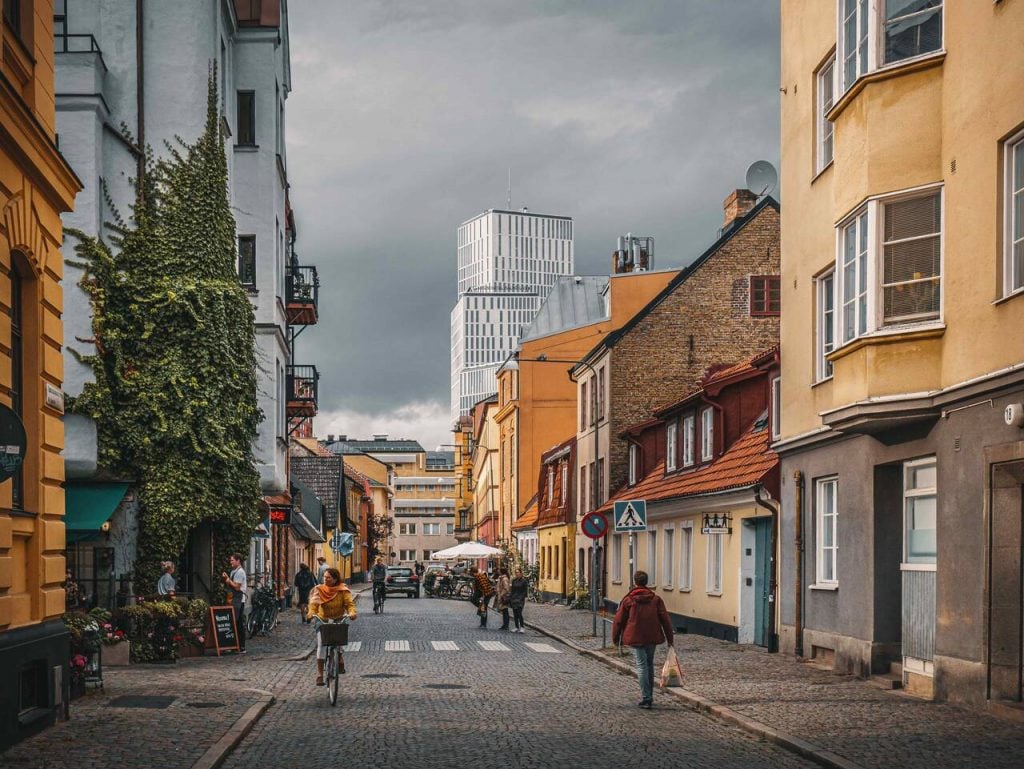
The two share several similarities in their social welfare systems and the quality of life they offer to their citizens, with both Canada and the Nordics being internationally recognized for providing high levels of social support, including universal healthcare, extensive educational opportunities, and comprehensive social security systems aimed at reducing poverty and inequality.
At the core of both Canadian and Nordic social welfare systems is the principle of universal healthcare, which guarantees medical services to all citizens regardless of income. This commitment to health as a fundamental right plays a crucial role in ensuring high life expectancy and low infant mortality rates across these countries.
The successful blend of economic prosperity with social equity seems to be the biggest factors behind why Canada and the Nordic countries frequently rank highly in global quality of life indices.
Factors contributing to these high rankings include not only the aforementioned healthcare and education systems but also robust environmental protections, low crime rates, and comprehensive measures to ensure work-life balance.
The Nordic model, with its focus on egalitarian principles and social cohesion, alongside Canada’s multicultural and inclusive approach to social policy — both aiming to create societies where all citizens can thrive and prosper.
A Growing Proportion of Canadians Claim Nordic Heritage
There are around 1 243 995 Canadians who report Swedish, Norwegian, Danish, Finnish, or Icelandic ethnicity — meaning around 3.4% of Canadians claim Nordic heritage as of the 2021 Canadian Census (Statistics Canada 2021).
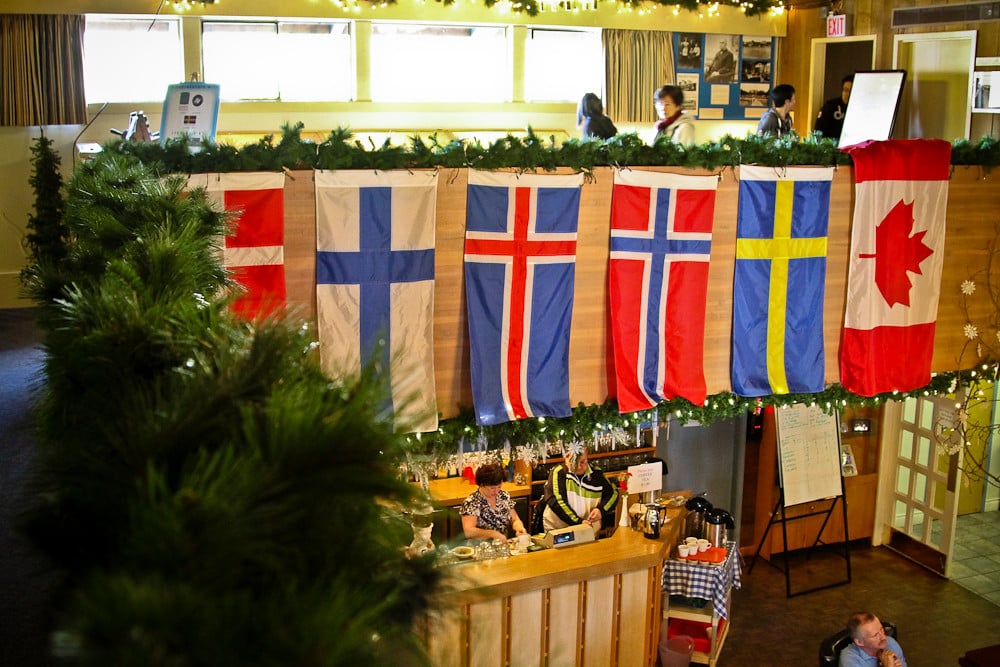
Interestingly (but perhaps not surprisingly given how humans tend to multiply), the proportion of Nordic Canadians has been seeing a steady rise from the post-19th century low of 1.35% (or 335 110 Nordic Canadians) in 1981.
% of Canadians who reported Nordic ethnicity 1871-2021
Source: Statistics Canada
So we’ve established that Canada and the Nordics have a seemingly endless list of things in common. Surely there can be an argument in favor of Canada being at least an honorary Nordic country? If only it was that easy…
Why Canada is NOT a Nordic Country
Despite its admirable social welfare system, extensive natural landscapes, and high standard of living, Canada does not, and never will, fall under the classification of a Nordic country for several reasons rooted in geography, political structures, historical ties, and cultural distinctions.
- Geographically, Canada is situated in North America, far removed from the Northern European region that encompasses the Nordic countries: Sweden, Denmark, Norway, Finland, and Iceland.
- The Nordic countries share a unique combination of historical, linguistic, and socio-political traits that have evolved over centuries, fostering a distinct Nordic identity characterized by a specific model of governance, social welfare systems, cultural homogeneity, and of course geography.
- While the Canucks generally boasts a progressive approach to social policies and multiculturalism, its political system—based on a federal parliamentary democracy with a constitutional monarchy—and Canada’s diverse cultural heritage shaped by Indigenous, French, and British influences distinctly set it apart from the cohesive cultural and political fabric of the Nordic nations.
- Furthermore, the Nordic countries are known for their “Nordic model,” which merges robust social welfare and universal healthcare systems with a competitive capitalist economy, something Canada emulates to a degree but not in its entirety.
- The Nordic model also emphasizes labor market flexibility and collective bargaining, underpinned by a high level of trust in government institutions, which, while present in Canada, does not mirror the Nordic experience.
- Additionally, the historical connections and mutual cooperation among Nordic countries through entities like the Nordic Council highlight a level of regional integration that Canada, isolated by geography and entrenched in the North American context, simply does not share.
While Canada and the Nordic countries may seem similar in many ways and align on many values like environmental stewardship and quality of life, the foundation of their societal structures as well as the characteristics of its geography remains fundamentally different.
Let’s explore the reasons why Canada is not very Nordic after all in more detail:
Reason #1: The Nordics is a Geo-Cultural Region Far from Canada
The Nordic region is comprised of the countries Sweden, Denmark, Norway, Finland, Iceland, and their associated territories like the Faroe Islands, Greenland, and Åland Islands. These nations share a distinct set of characteristics: similar “middle-way” political systems, closely linked innovative economies, comprehensive welfare states, and a collective cultural heritage rooted in Northern Europe.
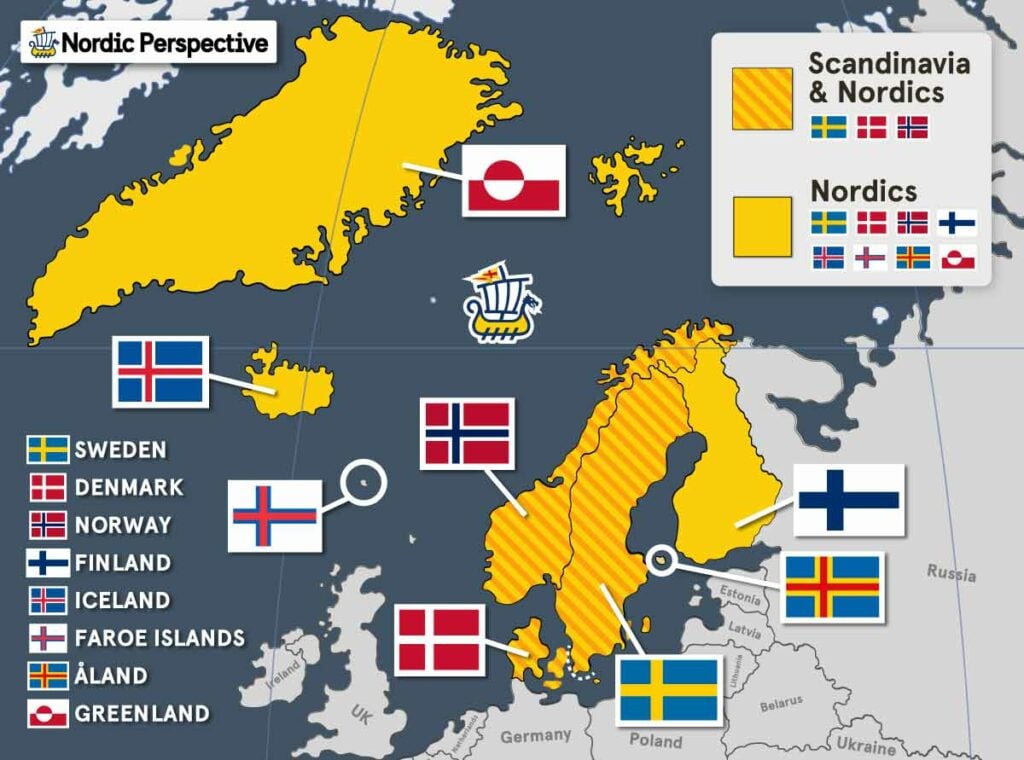
The so-called Nordic model is often cited as a benchmark for social welfare, characterized as a “middle way” with its blend of free-market capitalism with a comprehensive welfare state and collective bargaining at the national level.
The Nordic Council, established in 1952, serves as the official body for inter-parliamentary cooperation among the Nordic countries (Nordic Council 2021).
Reason #2: Geographic Distinctions (& Border Disputes!) Between Canada and the Nordics
Geographically, Canada and the Nordic countries are seemingly separated by vast distances, lying on opposite sides of the massive North Atlantic — but perhaps not if you’re counting the autonomous territory of Greenland, which is considered a Nordic territory as a part of the Kingdom of Denmark, but which classifies geographically as North American.
The only land border between Denmark and Canada is on Hans island, a tiny island west of Greenland that is also the location of the friendly “Whisky War“. This charmingly civilized footnote in the annals of international territorial disputes is part of a lighthearted conflict over the sovereignty of Hans Island, a barren rock situated in the Nares Strait, which separates Greenland (an autonomous Danish territory) from Canada.

The story goes that since the 1980s, when either nation’s military forces or representatives visited the island, they would leave behind a bottle of their country’s liquor—Canadian Whisky or Danish Akvavit—along with a note saying, “Welcome to Canada” or “Welcome to Denmark,” as a token of their claim.
This unique form of territorial assertion, involving the good-natured exchange of spirits rather than the exchange of hostilities, highlights the amicable nature between the two countries and indeed the strong friendship between Canada and the Nordics as a whole.
Both nations have managed to keep the spirit of camaraderie and respect for each other at the forefront of this peculiar contest for Hans Island, and in 2022, Canada and Denmark officially resolved their longstanding disagreement, agreeing to divide the island between them.
Reason #3: The Geographical Features of Canada & the Nordics Differ Significantly
Canada, the second-largest country in the world by total area, spans six time zones and encompasses a wide range of geographical features, including vast boreal forests, the Rocky Mountains, over 2 million lakes, and extensive Arctic tundra regions in the north.
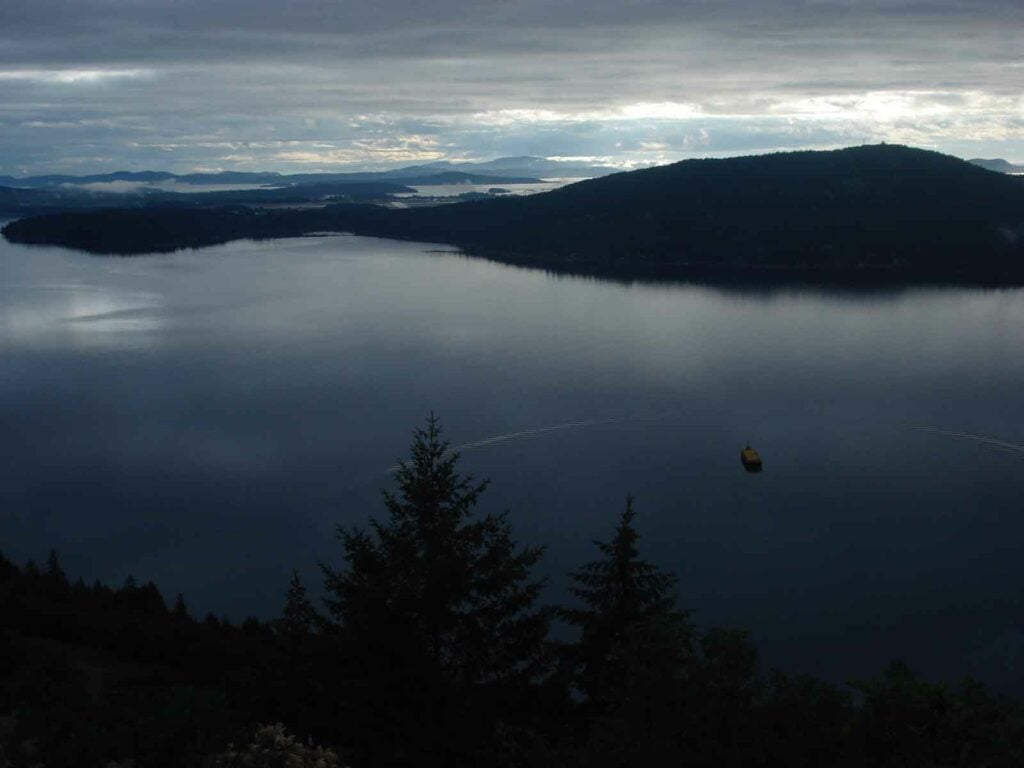
The North American country’s coastline is the longest in the world and borders three oceans: the Atlantic, Pacific, and Arctic. This geographical diversity contributes to Canada’s varied climate, from temperate rainforests in British Columbia to the polar climate of the Canadian Arctic Archipelago. The Hudson Bay, a large inland sea, is another notable geographical feature that significantly influences Canada’s climate and ecosystem.
Canada’s diversity of landscapes supports a wide range of ecosystems and biodiversity, making it a home to a rich variety of flora and fauna (“The Atlas of Canada,” Natural Resources Canada).
Here’s a comparison of the area of Canada vs the Nordic region as a whole, as well as the countries of Sweden and Denmark individually for country-to-country comparisons.
Comparing the total area of Canada and the Nordic region
| Canada | Sweden | Denmark (Largest Nordic Country with Greenland) | Nordics Total | |
|---|---|---|---|---|
| Land Area: | 9,984,670 km² | 447,430 km² | 2,210,579 km² | 3,484,244 km² |
The Nordic countries, while also known for their natural beauty, offer a different set of geographical features.
Norway is renowned for its dramatic fjords, mountainous terrain, and extensive coastline along the North Atlantic Ocean. Sweden and Finland are characterized by their extensive boreal forests, thousands of lakes (Finland is known as the “Land of a Thousand Lakes”), and relatively flat terrain compared to Norway.
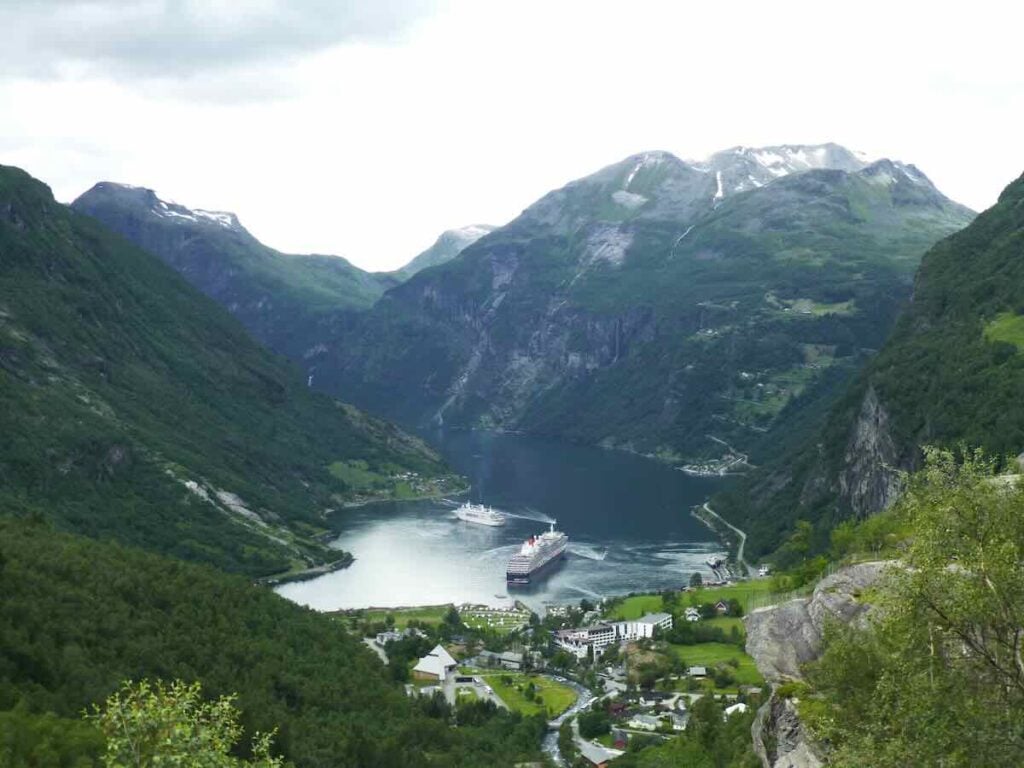
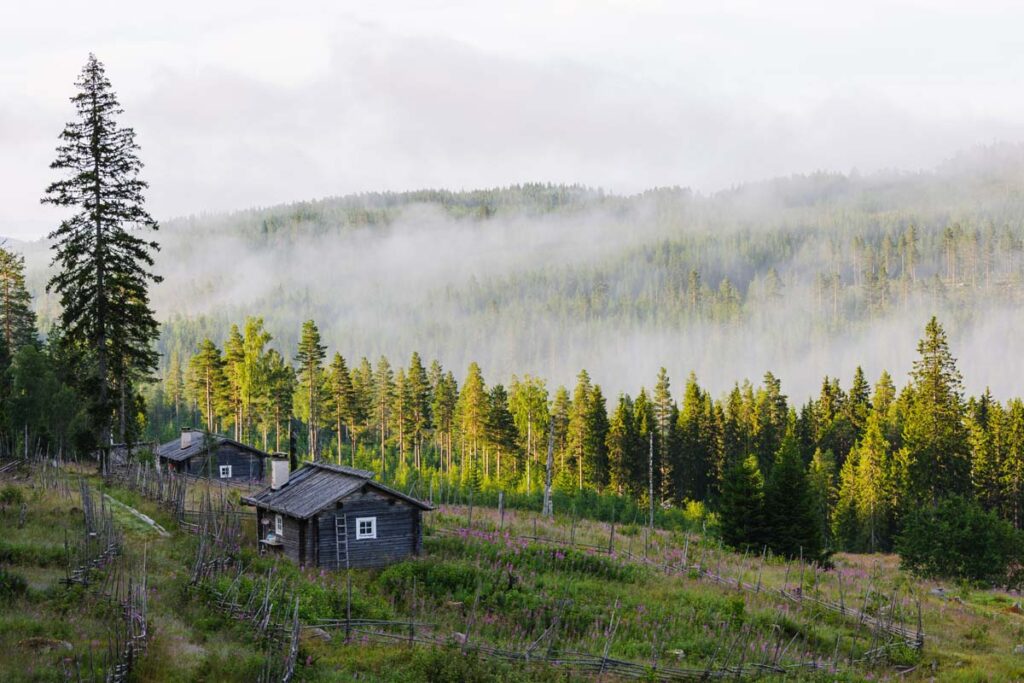
Denmark, the most southern of the Nordic countries, features rolling plains and a temperate climate, with a landscape that is predominantly agricultural.

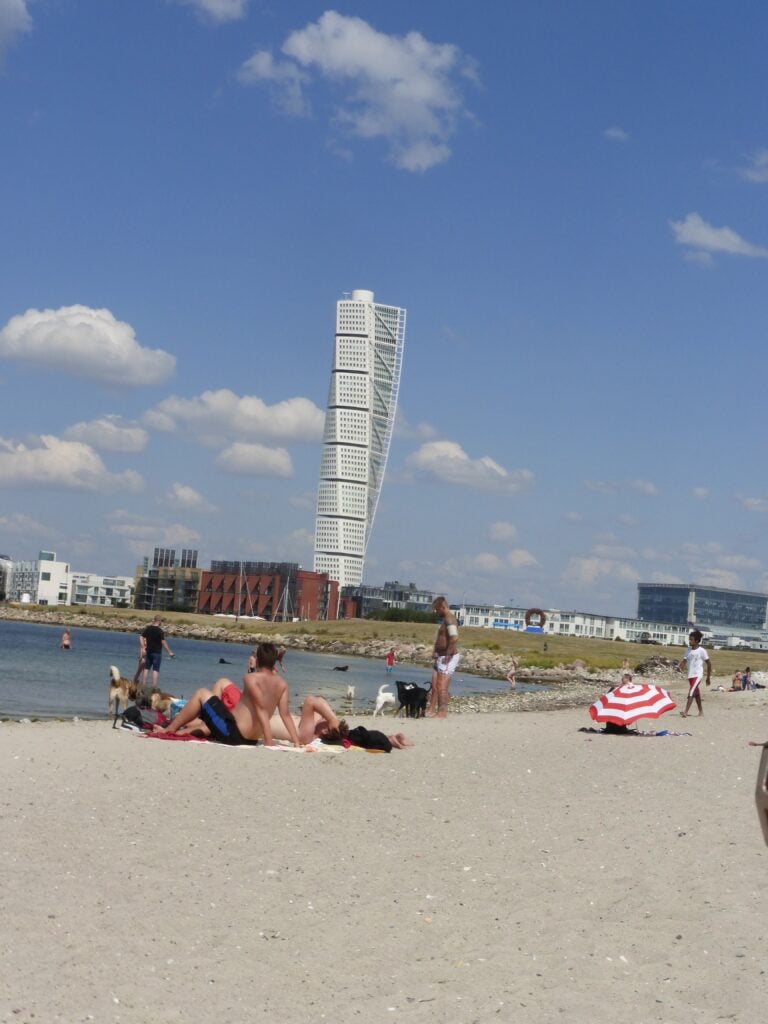
Iceland, situated in the North Atlantic, is geologically active, with volcanic landscapes, geysers, hot springs, and lava fields.
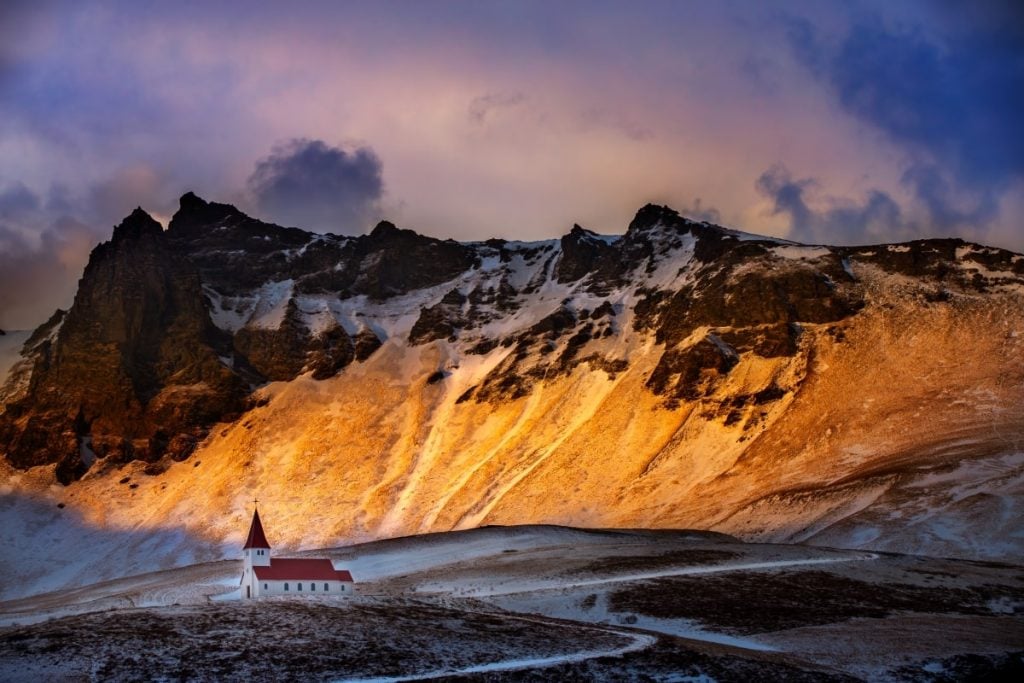
The Nordic region’s geography, especially in Norway, Sweden, and Finland, also includes the Scandinavian Mountains, which form a natural barrier with the Arctic climate influencing the northern parts of these countries. The proximity to the Arctic Circle results in polar nights in the winter and midnight sun during the summer months in the northernmost areas (“Scandinavian Mountains,” Encyclopedia Britannica).
The primary distinction between Canada’s and the Nordic countries’ geographical features lies in their scale and diversity. Canada’s vast territory encompasses a broader range of ecosystems and climates, from temperate coastal areas to polar regions. In contrast, the Nordic countries, with their proximity to each other and smaller land areas, share more uniform landscapes and climates, although they still exhibit significant internal variation, particularly between continental and coastal areas. Both regions share features such as boreal forests and Arctic tundra, yet the scale and expression of these features differ, influenced by their geographical location, topography, and climate patterns.
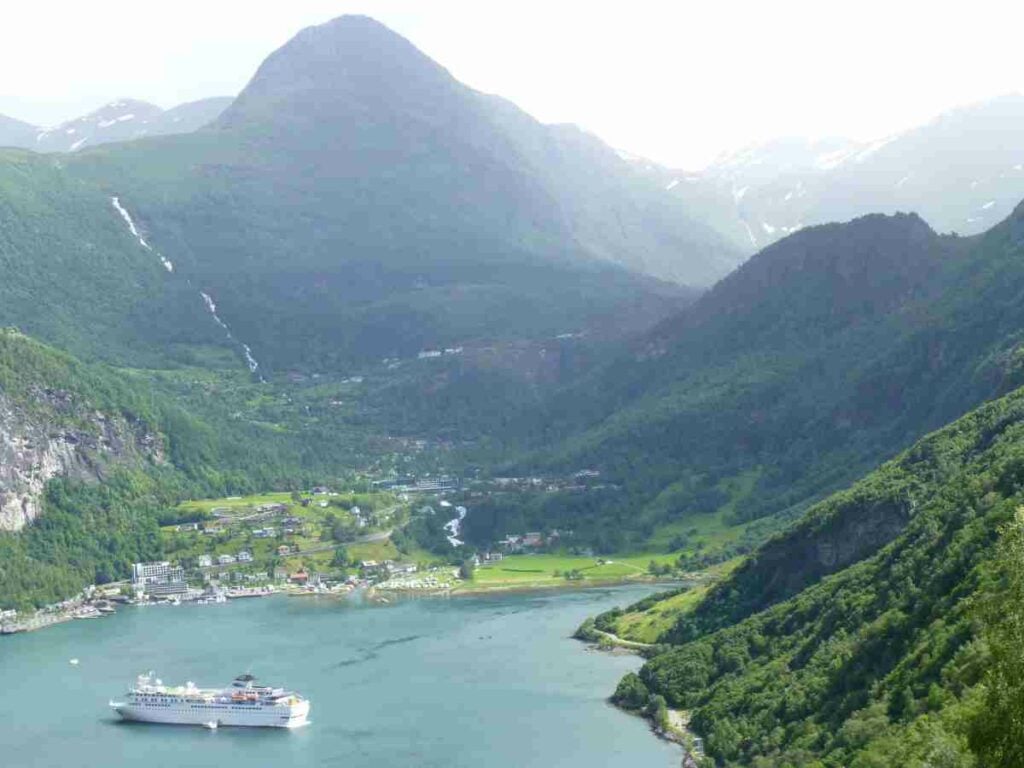
Reason #4: Differences Between Canadian and Nordic Political and Economic Systems
Politically, Canada operates as a federal parliamentary democracy and a constitutional monarchy, with the British monarch serving as the head of state. This system contrasts with the Nordic countries, which are characterized by their social democratic governance models.
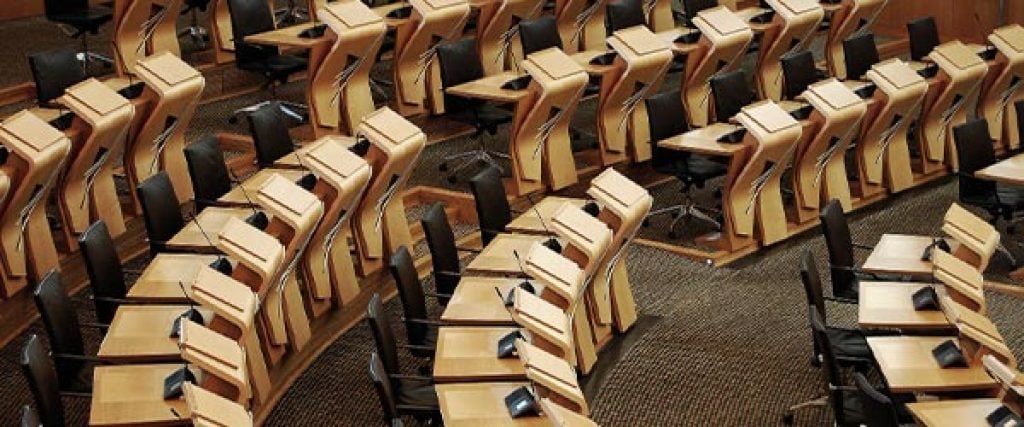
Economically, Canada and the Nordic countries follow different paths as well. The Nordic model combines market capitalism with a comprehensive welfare state and collective bargaining, which differs from Canada’s more liberal, mixed economy.
Although Canada is known for its high standard of living and social safety nets, the economic and political frameworks differ from the Nordic approach to social democracy (Johansson, The Nordic Model, 2018).
Reason #6: Cultural and Historical Differences Between Canada and the Nordics
Culturally, Canada and the Nordic countries each possess unique identities shaped by their histories and peoples. Canada’s culture has been influenced significantly by its indigenous populations as well as French and British colonialism.
This multicultural heritage is reflected in Canada’s bilingualism and multicultural policies. In contrast, the Nordic countries share a more homogenous culture, with shared historical narratives, languages, and traditions.

While there is a strong sense of national identity within each Nordic country, they also share a collective Nordic identity that is not present in Canada (Bergman, Cultural Identity in the Nordic Countries, 2021).
Reason #7: Canadian vs. Nordic Social Welfare
Canada and the Nordic countries are both generally renowned for their extensive social welfare systems, but there are notable differences in their approaches and coverage.
The Nordic model, encompassing Sweden, Denmark, Norway, Finland, and Iceland, is characterized by its universal welfare state, offering comprehensive health care, education, and social security benefits to all citizens — from the cradle to the grave.
Funded by high levels of taxation, the Nordic welfare system aims to reduce inequality, ensure a high standard of living for all residents, and provide a safety net that covers various social services and public goods.
Canada’s social welfare system, while also comprehensive, operates within a different context. Canada provides universal health care to its citizens, a hallmark of its welfare system, but the coverage and delivery of other social services can vary significantly between provinces and territories. Education, for example, is provided publicly, but higher education does not enjoy the same level of subsidy found in Nordic countries, leading to higher costs for university and college students. Canadian social security benefits, including pensions, unemployment insurance, and child benefits, are robust but generally offer less comprehensive coverage compared to the Nordic model.
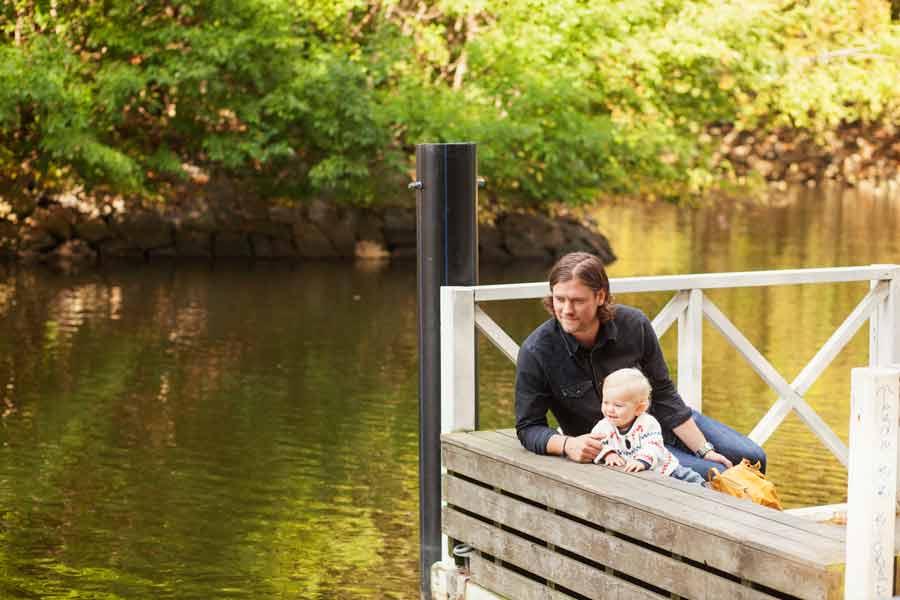
The differences in social welfare between Canada and the Nordic countries can partly be attributed to their varying economic models and societal values. The Nordic model emphasizes social equality, collective bargaining, and a high degree of labor market flexibility, underpinned by a strong consensus on the value of a comprehensive welfare state. In contrast, Canada’s system reflects a balance between market economy principles and the provision of key social services, with a greater role for private enterprise in certain sectors.
Sources:
Globalization and the Nordic Welfare States, Andersen, Aalborg University, 2019
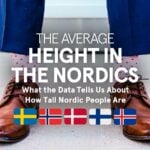 Average Height in the Nordics (Data & Graphs)
Average Height in the Nordics (Data & Graphs)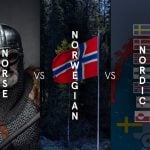 Norse vs. Norwegian vs. Nordic: Differences Explained
Norse vs. Norwegian vs. Nordic: Differences Explained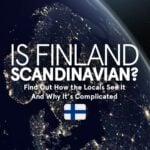 Is Finland Scandinavian? (The Full Answer)
Is Finland Scandinavian? (The Full Answer)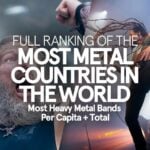 The Lands of Heavy Metal: Most Metal Bands Per Capita (2025 World Map)
The Lands of Heavy Metal: Most Metal Bands Per Capita (2025 World Map)

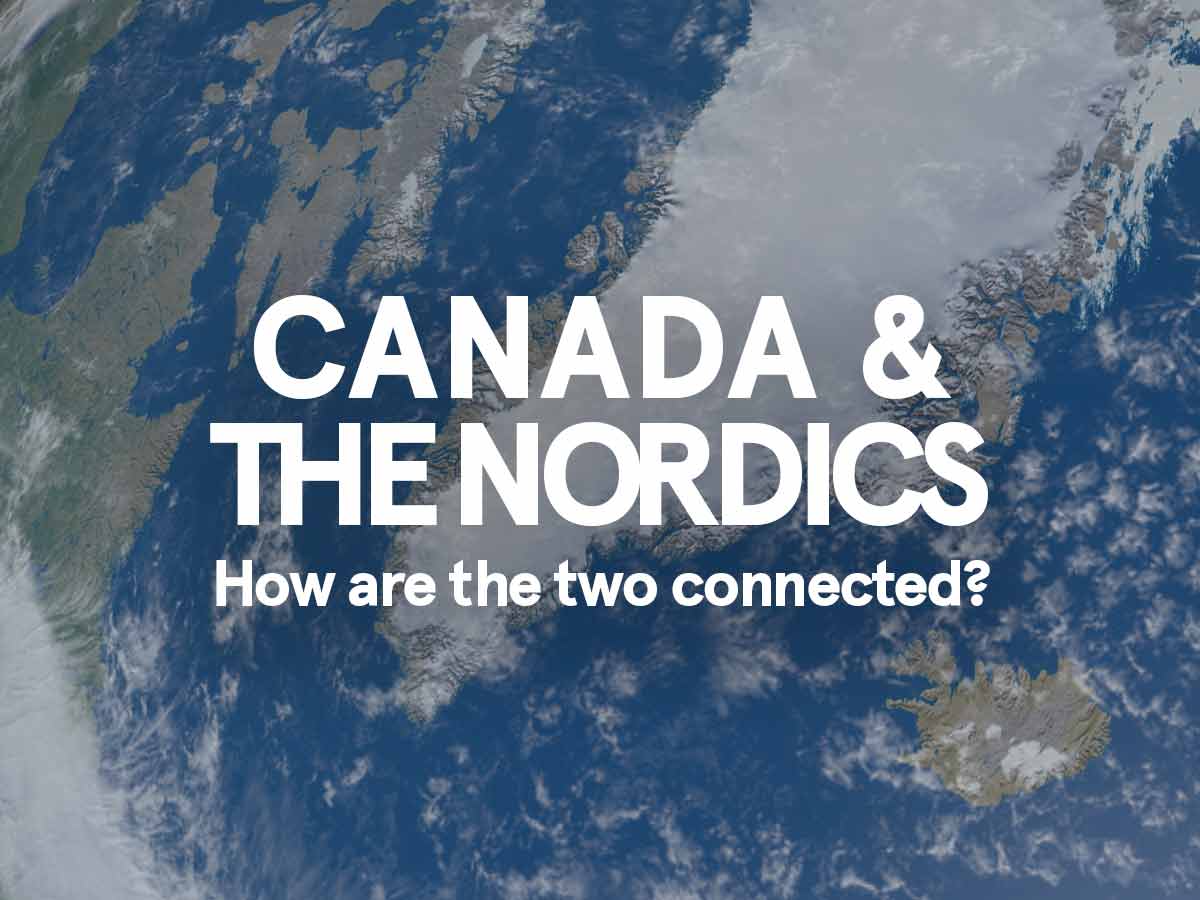
This article provides a fascinating look at the similarities and differences between Canada and the Nordic countries. I found the comparisons insightful, especially regarding social policies and cultural ties. The unique details about shared animal species and the friendly Hans Island dispute were particularly engaging!
This was a fascinating dive into why Canada, despite its strong similarities, remains outside the Nordic fold. Its quite amusing to learn about the tiny Hans Island whisky war while realizing how geographically separated we really are! While we share a love for long winters and universal healthcare, the sheer scale of Canada and its distinct historical tapestry make it a unique case. Its like a very friendly, multicultural cousin showing up at the Nordic family reunion – interesting to see, but definitely not a Nordic sibling! The article hits the nail on the head (or perhaps the maple leaf on the Nordic one?).